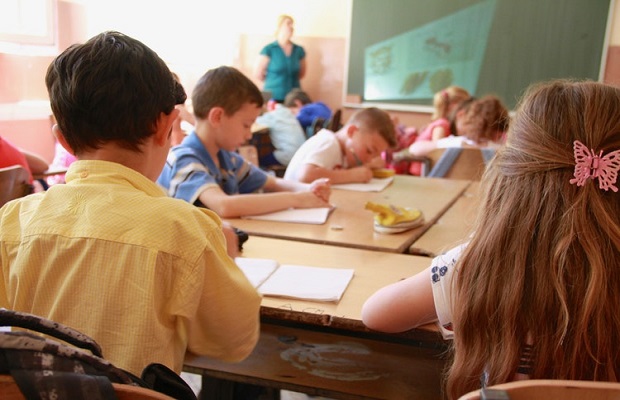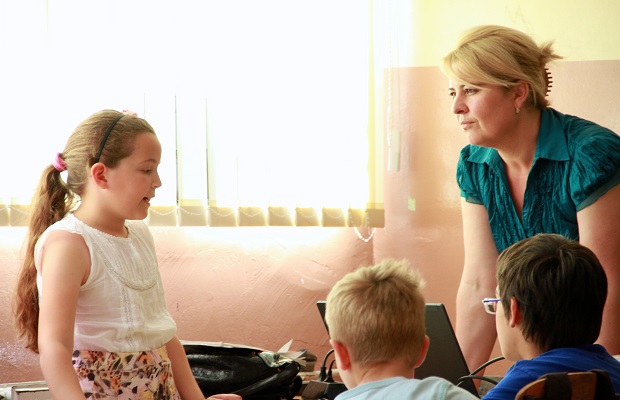| Rationale and Short Description of the Project |
Research findings (cf. Ainscow, 2010; Chapman et al., 2016) and several (European) reports (see below) repeatedly suggest that schools in several (European) countries largely fail to meet high standards of both excellence and equity. In particular, an alarmingly high percentage of European students (more than 20%) does not reach a minimum level of basic skills in mathematics (and in the STEM area, in general), with this percentage climbing as high as 40% in countries such as Cyprus and Greece and remaining at this high level in different cycles of these international studies (OECD, 2016). Also, only 2%-3% of the European students reach the highest level of proficiency, with this percentage being lower in some EU countries (such as Ireland, Greece, and Cyprus). At the same time, there is large variation in achievement between students within schools, indicating that schools fail to create an equitable distribution of learning opportunities (OECD, 2016; see Schleicher, 2014, p. 17 for such results in Portugal & Greece and EC/EACEA/Eurydice, 2011 for such results in Cyprus). Achieving greater equity in education is imperative not only for social-justice considerations, but also because it can help “increase the supply of skills that fuel economic growth, and promote social cohesion” (OECD, 2016, p. 6).
In response to these challenges, several European countries have attempted to revamp their mathematics curricula to support student learning. However, simply doing so is not enough to tackle these challenges, because, as the European Commission underscores, teachers need specific support and guidance to implement such curricula to reach their full potential (EACEA/Eurydice, 2011). For example, simply including cognitively challenging tasks in student textbooks does not suffice for enacting such tasks in the ways intended by their curriculum developers and thus creating rich learning environments that nurture reasoning and critical thinking (NCTM, 2000; Silver, 2009). Similarly, simply advocating teachers to teach in ways that offer opportunities for all students does not provide teachers with concrete ways for doing so in their daily practice. Teachers need both curriculum materials that provide specific support and solid guidelines to teach for excellence and equity, as well as professional development from expert teacher educators in how to do so.

The main goal of the EDUCATE project is to develop materials for teachers and teacher educators and educate teachers so that they can promote excellence and equity in their teaching. By attending to cognitive activation (i.e., student engagement in high-level mathematical thinking and mathematical reasoning by appropriately enacting challenging mathematical tasks during teaching, e.g., Stein, Smith, Hanningsen, & Silver, 2000), the project aspires to help teachers promote excellence in their classrooms; by considering differentiated instruction (i.e., modifying teaching to respond to the different levels of readiness, interest and learning profiles of all students, Tomlinson, 2003, as reported in Hertberg-Davis, 2009, p.251), it seeks to promote equity. This is because prior research (e.g. Boaler & Staples, 2008; Boston & Smith, 2011; Stein et al., 2007) has shown that engaging students in cognitively activating tasks is pivotal for supporting them in developing key competencies for the 21st century (e.g., problem solving and reasoning)—thus addressing the excellence goal. In today’s mixed-ability classrooms (especially given the diverse student populations schools currently serve), engaging ALL students in such tasks becomes a reality when students receive differentiated instruction (Darling-Hammond et al., 1999). To offer such instruction, teachers need to proactively modify the teaching methods, resources, and learning activities to address the varied readiness levels, languages, interests, and learning preferences of their students (Tomlinson et al., 2003).
In particular, the objectives of the EDUCATE project are:
- to identify the needs and challenges teachers face when seeking to engage ALL their students in cognitively activating work;
- to develop materials informed by these needs and challenges for supporting teachers in attending to both cognitive activation and differentiation;
- to develop materials for teacher educators to scaffold them in aiding teachers as they concurrently pursue the dual agenda of cognitive activation and differentiation;
- to educate teachers and teacher educators to use these materials in their work;
- to examine the potential of these materials and professional development through video clubs in improving instructional quality with respect to issues of cognitive activation and differentiation.

Specifically, after performing a needs-assessment analysis to identify pre- and in-service teachers’ needs, challenges and difficulties as they enact challenging tasks with all their students, through observing their teaching and conducting interviews (Phase 1), the project will produce materials intended to help teachers concurrently attend to cognitive activation and differentiation and to scaffold teacher educators in productively supporting teachers to engage all their students in challenging work (Phase 2). The innovative character of these materials is twofold: First, few, if any, existing materials concurrently attend to both issues and offer solid guidelines and examples of good practices to help teachers effectively work at both fronts. Second, these materials address both teachers and teacher educators, recognizing that simply providing teachers with curriculum materials—no matter how good they are—does not suffice for helping them introduce changes in their instruction unless they are appropriately scaffolded. Another innovative element of the project is that it does not simply produce materials for either teacher educators or teachers, but it also EDUCATEs them to enact these materials in practice by capitalizing on the approach of video-clubs engage teachers in guided reflection around their practice as they use these materials (Phase 3).
EDUCATE has a transnational character since the development, implementation, and refinement of the materials and the professional development process will involve partners from four European countries. More critically, however, its transnational character lies in the fact that by including different European countries we aim at developing materials that address challenges and needs that cut across different European educational systems. Testing these materials in four different countries increases their applicability and transferability within European Union—thus contributing to current European and international policy discussions regarding identifying ways to address issues of excellence and equity (Schleicher, 2014).

| References: |
Boaler, J., & Staples, M. (2008). Creating mathematical futures through an equitable teaching approach: The case of Railside school. Teachers College Record, 110(3), 608-645.
Boston, M. D., & Smith, M. S. (2009). Transforming secondary mathematics teaching: Increasing the cognitive demands of instructional tasks used in teachers' classrooms. Journal for Research in Mathematics Education, 40(2), 119-156.
Chapman, C., Muijs, D., Reynolds, D., Sammons, P., & Teddlie C. (Eds.) (2016), The Routledge international handbook of educational effectiveness and improvement: Research, policy, and practice. New York, NY: Routledge
Darling-Hammond, L., Wise, A., & Klein, S. (1999). A license to teach: Raising standards for teaching. CA: Jossey-Bass.
European Commission/EACEA/Eurydice (2011). Mathematics in education in Europe: Common challenges and national policies. Retrieved, September 18, 2014 from http://eacea.ec.europa.eu/education/eurydice/documents/thematic_reports/132EN.pdf
Hertberg-Davis, H. (2009). Myth 7: Differentiation in the regular classroom is equivalent to gifted programs and is sufficient. Gifted Child Quarterly, 53(4), 251-253.
National Council of Teachers of Mathematics. (2000). Principles and standards for school mathematics. Reston, VA: Author.
Silver, E. A. (2009). Toward a more complete understanding of practice-based professional development for mathematics teachers. In R. Even & D. L. Ball (Eds.), The professional education and development of teachers of mathematics (pp. 245-247). New York: Springer.
Stein, M. K., Remillard, J., & Smith, M. S. (2007). How curriculum influences student learning. In F. K. Lester (Ed.), Second handbook of research on mathematics teaching and learning (pp. 319–369). Charlotte, NC: Information Age Publishers.
Stein, M. K., Smith, M. S., Henningsen, M. A., & Silver, E.A. (2000). Implementing standards-based mathematics instruction: A casebook for professional development. New York, NY: Teachers College Press.
Tomlinson, C. A., Brighton, C., Hertberg, H., Callahan, C. M., Moon, T. R., Brimijoin, K., … Reynolds, T. (2003). Differentiating instruction in response to student readiness, interest, and learning profile in academically diverse classrooms: A review of literature. Journal for the Education of the Gifted, 27(2-3), 119–145. doi: 10.1177/016235320302700203

